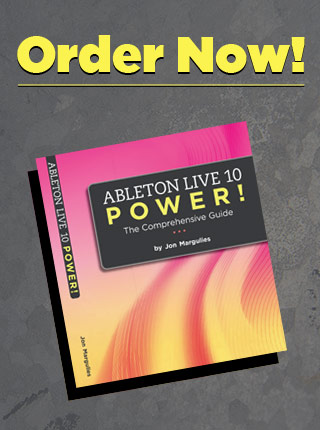The problem with inspecting mixes using Spectrum is how relatively similar everything can look. The trick is knowing what to look for. But even with some more knowlege, be aware that we’re definitely working in a realm of subtleties, and what you’re likely to get out of the process is a slow buildup of wisdom on the subject rather than a quick whiz-bang fix for your mixes.
The top line shows you the highest peak that has occured for any given frequency, while the line below responds in real time to the frequencies in the signal. If you’re interested in peak values of different songs, make sure to stop Live completely before playing back a different clip. This clears the display. Otherwise, you’ll be looking at a combination of the peaks from all of the different songs.
Make a note of the shape of the low end. With some tracks, you’ll be able to see a big undulating bump from 100Hz on down every time the kick drum hits. Sometimes the low end peaks create an almost straight line from 50Hz up to 100, in other cases there’s a big peak at 60Hz and a fairly steep drop off in either direction. Try to correlate any facts you notice to what you’re actually hearing come out of the speakers or headphones.
Just about everything has a sharp drop off at 30Hz. Make a note of the peaks vs. the average. In the example above, the bottom of the scale (10Hz) only occasionally jumps up to -30 and mostly hovers between -42 and -48.
If you’re not sure of the exact frequency of any point in the display, hover your mouse pointer over it and take a look in the lower left hand corner.
Now focus on the high end. Some songs have a big bright splat of a snare drum that makes the entire top of the graph bounce with each hit, while other snares exist in a much smaller part of the spectrum. Two songs may have a similar overall brightness, but contain different elements in the top frequencies of the mix. See if looking at the graph can change what you’re hearing up there.
You may also spot a steep cut on top, indicating that the frequencies above 18k have been almost completely eliminated in mastering.





